Well, no matter how hard we try we can’t stress enough the importance of riding safely. Sure, most of you think you are invincible or maybe say to yourself, “Hey, that can’t happen to me”.
Unfortunately, as you get a little older, you either experience a crash or know people who have and it ain’t pretty! So, PLEASE!
Take a few minutes to read the info below! It just might save your life!
Proper Distance
Maintaining proper distance from the vehicle in front of you is extremely important. Now you might say, “no duh” it’s just like driving a car. There are a few important differences. In general, most bikes can stop quicker than a car.
So if the car in front of you stops short, you have no problem, right? Wrong! The car behind you can’t stop as fast and before you can say “peanut butter and jelly” Wham!
Remember, bikes don’t have fender benders! (Ok, rarely).
Lane Position
Another tip for the new biker is the lane position. Try to ride on one side or the other, but not the middle.
The middle has lots of oil, grease, anti-freeze and all kinds of other lubricants that can make tires dangerously slick. This is especially important when coming to a stop.
That’s where the oil slick is at its thickest. As far as which portion of the lane is better, we typically prefer the left. If a car decides to dart into the next lane to avoid a slower car, you would have a few extra moments to make your escape.
If you’re in the far right lane, keeping toward the left side again has the same effect of providing when the nose of a car comes poking out of a side street.
Good Working Equipment
We can’t stress enough the importance of proper working equipment. On a car, it may mean the difference between getting there on time or getting there late.
On a bike, however, it may be the difference between life and death! Tires are probably the most important item to be checked before EVERY ride.
Tires
Check tire pressure with an accurate gauge. A buddy of ours got scraped up pretty good when he wiped out while riding with a low-pressure front tire.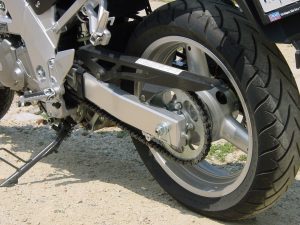
He went around a tight corner causing the rubber to move out from under the rim. The rim hit the ground and a low-side crash resulted. Totally could have been avoided. Luckily it was a relatively low-speed crash.
Also checking the condition of the tires before each ride is important. The tires may be starting to dry rot and crack. You may have run over some glass or a nail the last time you were out compromising the integrity of the tire.
This type of damage is often more serious on a sports bike due to the greater extremes that sportbike riders push their tires. But no matter what you ride, it must be taken care of NO MATTER WHAT. Don’t assume it will hold one more ride.
A blowout on a bike quite often results in disaster.
Chain
The condition of the chain should also be checked. Make sure the chain is properly lubricated and not rusting.
Taking care of the chain extends its life and minimizes the risk of breakage. Breaking a chain at high speed is extremely dangerous since it is very likely that it will wrap around the rear sprocket and lock up the tire.
We don’t know about you, but sudden rear tire lock up at 70 MPH is something we never want to experience.
Brakes
And one of the last (but not least) serious safety-related items is proper brake condition. Make sure they are adjusted properly and have a solid feel. A spongy feel may mean that there is air in the lines and they need to be bled.
Blind Spots – Yours and Theirs
Their Blind Spot
Another great survival technique is blind spot avoidance. In other words, constantly make sure you are not in someone’s blind spot.
Typically, this is anywhere equal to or back behind the driver. Now you may say, “hey that’s not true, I drive a car and the blind spot isn’t that big”.
I agree, but allowing that much space is always the safest. There is no way of knowing exactly how much the driver can see in his side mirror if he ever does decide to use it.
Riding on the right side of a car or truck is especially precarious. Of course, you can’t always avoid these areas, especially during heavy traffic.
When stuck there, remain extremely alert with the foot and hand ready to apply the brakes, the throttle hand ready for action, and the horn thumb ready for vindication!
Remember, recognize the situation and decide what you’re going to do BEFORE you’re in trouble.
Knowing the locations of the vehicles around you AT ALL TIMES will offer the best chance of survival when the escape path must be chosen.
Your Blind Spot
This brings up the issue of dealing with your blind spot. Now the blind spot on a bike is obviously much smaller than a car or truck.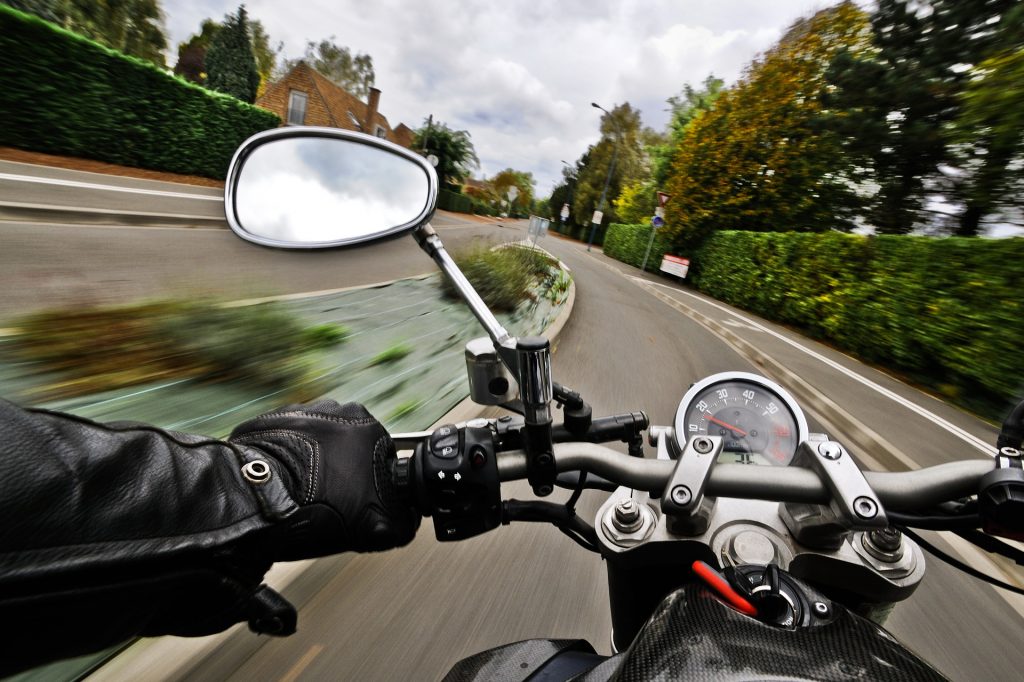
The type of helmet you wear can also be a factor. Although full face helmets offer greater protection, they also restrict your peripheral vision making your blind spot bigger.
To overcome this, we have come to love those little blind spot mirrors you can purchase online or at the local store. You can have one on each mirror on your bike as well as one on the driver side of each car in the house.
These little devices make keeping track of the vehicles around you a breeze. Once proficient at using them, it can eliminate the dangerously time-consuming movement of turning your head halfway around to check traffic.
As most of us have experienced, while turning and checking the lane we’d like to use, the moron in front of us has decided to slam the brakes for no apparent reason.
If you’re using these mirrors and you get in trouble, no problem. You already know exactly where everyone is and a quick glimpse can lead to a clean get-a-way.
Riding A Motorcycle In Groups
Riding with friends is a great way to have fun and ride a little safer. The reason it’s safer is that you’re far more visible.
You’ve probably even noticed it while driving the car. You see one bike and it’s not very noticeable or really doesn’t even catch your eye.
You see two or more bikes riding along and you’re usually likely to take a look. Even non-bikers tend to notice groups of bikes more.
I’m not sure if it’s the extra noise, the bright colors, or the fear that it might be a “hoodlum gang” (cool, eh?), but they usually take notice.
So the next time you’re about to go for a long ride, give your buddy a call. You’ll have a great time and stay safer in the process!
Time to Ride
Riding certain times of the day can be much riskier than others. If you’re a commuter, you’re pretty much forced to ride during, rush hour, the most dangerous time on the road.
One way to mitigate the risk is to try shifting your work schedule. I realize that not everyone has this luxury, but usually shifting your work schedule an hour or so later makes a huge difference.
The biggest rush around is for the people trying to make the 8 – 16:30 shift. Therefore, if you can delay your trip an hour or so and come home a little after the rush hour, the difference in traffic is drastic.
If you only ride the bike for fun, stay out of rush hour! We suggest riding in the evenings when it’s much cooler.
We would also try to avoid riding on Friday or Saturday nights when the drunks are out. If you’re really dying for a ride on one of those nights, call a buddy to come along.
The Pace
The pace is a riding style. It means don’t sit in the same spot, especially someone’s blind spot. Slowly make your way through traffic with a smooth yet deliberate motion. Now, we’re not condoning speeding (we would never do that!).
Just cruise along slightly faster so you always know where the traffic is and there is no chance for you to get stuck or forgotten in someone’s blind spot.
Riding like this does not mean hot-dogging through traffic like a video game or always making sure you’re the fastest.
It’s simply a style of riding where one stays extremely alert, never becoming complacent or comfortable just tooling along. This riding fosters self-awareness and a higher level of conscious riding.
You can usually notice this style of riding from the “erratic” type or the “sit back and hope nothing happens to me” type.
Assume You Are Invisible
You just bought that brand new big, lightning fast awesome machine. You hop on that motorbike and think to your self, “I’m bad, and definitely all that! Watch out, here I come!”
Then a few minutes into your ride, some idiot almost makes a speed bump out of you. You think to yourself, “This guy didn’t even see me.”
You’re probably right. He was too busy on the phone or just plain daydreaming. The moral of this story: Assume you are invisible.
Basically, you’re a pretty insignificant part of their daily drive. They figure you can’t hurt them and whoever is in their way will just have to move over.
The end result is that they’re not focused on you so they usually can’t even see you. There are a couple of things you can do to make yourself more “visible”.
Loud Pipes
One trick is called keeping “The Pace”. Another good idea is loud pipes. Some might say that you just have the loud pipes because you think they sound good.
You can tell them that they also let the daydreamer in the car next to you know you’re there. For us, we’re torn between loud pipes and running stealth so we still have the stockers on.
High Beam Blinking Kit
There are also some other motorbike modifications that work well such as a high beam blinking kit. Basically, it blinks the headlight making the bike more noticeable during the day. It’s not to be used at night.
Wearing A Bright Clothing
Another good idea is bright clothing and helmet. We know, the black stuff looks much cooler to wear but makes you very “invisible”.
If you’re wearing black clothes and black helmet, the car flying up to a light won’t see you and will probably have a very tough time seeing that little tail light.
One tip here: keep your foot or hand on the brake lever at a light and even blink them when a car is coming up on you.
Numerous times we’ve seen cars coming up pretty fast and then noticeably hit the brakes when flickered the brake light a few times.
Proper Riding Gear
Proper riding gear must always be worn. You might say, “Come on, it’s 100 degrees out there.” But that’s really no excuse.
However, maybe a lighter, cooler type of protection may be appropriate. In Florida for example, it’s mighty hot most of the year.
If it’s hot, you can still wear your full face Arai helmet, Timberland boots, denim jeans, and Kevlar gloves. When it’s really too hot, a jacket is not recommended because overheating can be a dangerous thing as well.
And that’s from our point of view. Everyone must decide what’s comfortable for them, but the other items should always be worn at the very least.
The Helmet
His Majesty The Helmet is probably the single most important item. The passenger should have a good one also.
When trying to decide if you need a new helmet or what price range to look in, remember this phrase from one of the helmet manufacturers, “If you have a $10 head, wear a $10 helmet.”
This statement counts not only for the driver but for the passenger, too.
There are many different makes and models out there but most are quite good. Here are some things to remember when selecting a helmet.
First, it must be DOT approved. For the ultimate protection, a full face helmet is the only way to go. It protects the entire head and also the jaw and chin areas.
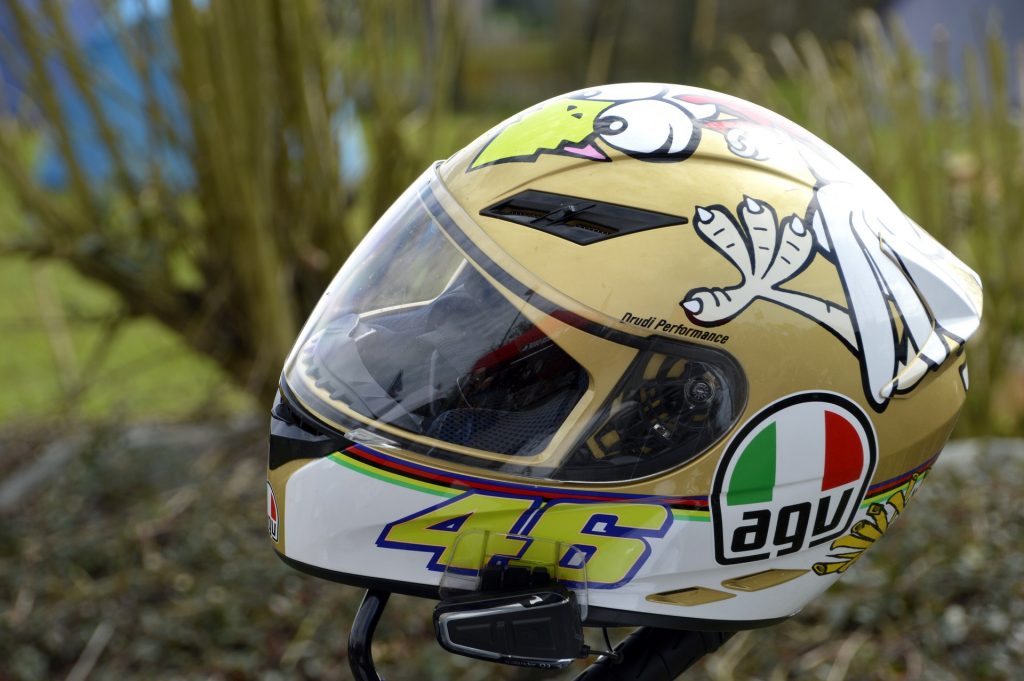
The helmet also needs to have an adequate layer of thick Styrofoam. This is the shock absorber between your head and the outer shell of the helmet during impact.
If the helmet has been in a crash, it’s time to get a new one. Hidden micro-fractures to the outer shell and damage to the Styrofoam can compromise the effectiveness of the helmet in the event of another mishap.
The fit needs to be snug also. With the chin strap on, you should not be able to rotate the helmet forward until it comes off.
Also, push on the side of the helmet with your hand. You should only be able to get a finger between your face and the helmet. More than that and the helmet will probably rattle around on you at higher speeds.
A little snug at the beginning is OK because most will contour to the shape of your head after using it a while. That’s why it’s good practice not to share your helmet.
The foam (soft comfort foam, not the hard Styrofoam) will start to change shape causing the fit to change. Of course, on the flip side, don’t get one that’s too tight.
Riding with a tight helmet will definitely detract from the riding experience. It’s also good to remember that they’re much like clothes, a medium from one manufacturer is not the same as a medium from another.
Boots
Boots are the next piece of important clothing. There are a couple of things to consider when selecting the right boot.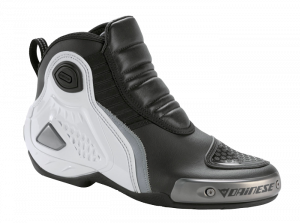
Ideally, they have to be a functional boot that provides crush protection like steel-toed boots. You can also consider those that are not steel-toed, but if they are rugged boots with thick soles is also very good.
Trendy boots that just “look” good are not acceptable. They also need to have good traction in both dry and wet conditions.
This is primarily to give you traction when getting on, stopping at a light, or maneuvering the bike into a parking space.
A slip here is usually not very dangerous but can be very expensive and definitely embarrassing.
Gloves
Gloves are the next important item. We see so many people not using gloves. “Oh, my hands sweat too much.” Poor baby!
A buddy of ours recently went down in a low-speed crash in a construction zone. His jeans got a little torn and his shoulder had a scratch through his T-shirt.
His helmet absolutely protected his head by absorbing impact with the concrete. It had a huge scrape roughly the size of a baseball.
He promptly bought a new one! His hands, however, did not fare so well. They were scratched up pretty bad. Even the cop writing up the incident added a little salt to the wound (pun intended!) by adding that a good set of gloves would have prevented those painful scrapes.
If you fall, no matter whether you’re going fast or slow, the first thing instinct tells you to do is put out your hands to break the fall. So even if you just tip over, you’re very likely to tear up your hands.
Jacket
The only thing which could be changed depending on the weather or temperature is the jacket. We know that to get the best protection we should wear a leather jacket all the time, but heat exhaustion is not our idea of a good time either.
In South Florida for example, the temp is 90+ ℉ with 85% humidity most of the time.
For about 3 weeks out of the year, the temp drops below 65 ℉ making it bearable to wear a regular leather jacket.
Overheating your body because of a heavy jacket may actually cause you to have an accident! Again, this is just our opinion about this particular situation.
Some of the riding gear manufacturers, however, have some nice thinner jackets that can provide a limited degree of protection.
Some also offer thicker jackets that have inserts that can be removed or lots of zippers for ventilation. If it’s comfortable enough to wear a jacket where you ride, then we would definitely recommend it.
Prediction
We have found that prediction is one of the most valuable skills. If you have been living for 20 years in Los Angeles for example and been riding for 18 of those, you will know what we mean.
There are particular cities that are especially dangerous. Almost daily you experience some of the following situations:
- Someone stops anywhere in the road for no apparent reason
- You see an old guy being like: “Don’t use blinkers because I’m old and I don’t have to”!
- Someone keeps a blinker on indefinitely
- You find people who always drive 20 miles below the speed limit
- People crossing 3 lanes to make a turn
- A buddy driving a car too big to see anything but the hood ornament
- The guy in front of you have to slam on the brakes at every intersection because he can’t read the road signs
Sounds familiar to someone? It’s terrible! Some congressman had the right idea by trying to pass a law making people older than 65 take a driving test every year.
With a majority of the voters being in this age bracket, this was quickly squashed due to “discrimination”. What a surprise! Older drivers by themselves aren’t that bad.
They do everything very slow. Expect that they will do something dangerous and they usually do. The problem here is the ever-increasing population of young people.
The young people drive extremely erratic and unpredictable trying to avoid the slower old people. It’s a lethal combination that requires your undivided attention. Look at the drivers.
Watching someone’s head is also a great indication of what they may do next. If you see them looking over their left shoulder and into their left side mirror, they’re about to come over.
Are they calm or frantic? Are they riding the bumper in front of them waiting for the “hole” to open up and go around? This is the most common case and can usually be spotted.
Here is a true story from just the other day. A car was seriously riding the bumper in front of them. First, they put on the left blinker and then the right.
Approaching the driver’s window, it was a woman checking her watch, shouting obscenities, and pounding the steering wheel in obvious frustration.
Also, is the driver pre-occupied with something else such as using a phone, applying makeup, shaving, etc?
Is the car a piece of junk? A car in bad shape could indicate a careless or reckless driver or just a plain dangerous car.
Decide what you’re going to do BEFORE you’re in trouble. Don’t rely on the horn. It can’t stop a car. Check the traffic behind you (like you were doing all this time, right?).
If they start coming over and you’re next to their door, apply the brakes. They slip on by, and incident avoided.
If you’re closer to the front of the car, it may make sense to squeeze the throttle and shoot past. Again, incident avoided.
Knowing or realizing that your lane is about to close BEFORE the idiot next to you starts to share your lane is the best preventive medicine that we can give. Try “predicting” next time you’re out and you’ll be amazed at how easy it can be.
Avoiding Road Debris
Road debris comes in many different forms. It could be a piece of sod from a lawn truck, a piece of rubber tire, deep puddle, or large pothole.
Trying to avoid that debris usually gives rise to an interesting phenomenon. Remember how that little league baseball coach always said, “Keep your eye on the ball”?
The reason he said that was because when your eyes focus on an object that you want to hit, your muscles keep adjusting using the info your eyes are giving them.
Applying this principle to avoiding road debris is very similar. The key, however, is focusing on the escape path. Focus on the path the bike needs to take and NOT on the object you’re trying to avoid.
You’ll be amazed how well this works. This is another skill that requires parking lot or deserted road practice. While moving at a relatively slow speed, pick an object you’re coming up on like a manhole cover.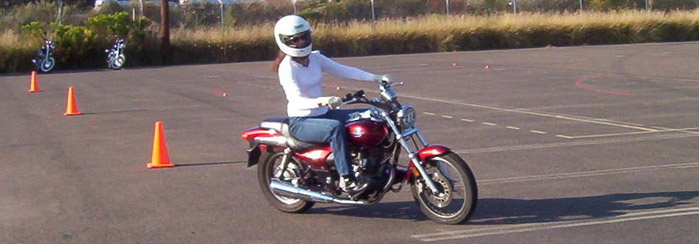
As soon as you pick the object, focus on the escape path and try not to think about or look at the object. The bike will easily avoid it. Again, the key is practice.
Start out with slow speed passes. As your skills increase, increase your speed. Nothing crazy, but try to work your way up to normal speeds. The key to this maneuver is making sure that your escape path is clear and doesn’t contain an even bigger object, like a car!
Panic Stop
Practice the emergency stop in a deserted area like a parking lot when the store or office is closed. Using both brakes is the best way to stop the bike.
You might catch yourself just stomping the back brake when things got a little crazy. The rear brake skid will stop the bike, but bringing the front tire and the back tire to “near” skid is far superior and could mean the difference between a close call and the rear window of the car in front of you.
As kids, most of us spent long hours trying to make the most impressive rear wheel skid on a bicycle as possible. That, of course, burned that specific behavior into our memories creating the instinctive response.
Of course, using the front brake to stop is directly related to the cleanliness of the road. If there is a lot of sand and gravel, the front brake will be very dangerous.
On a clean road, the front brake is all you need. Sportbike racers ONLY use the front brake!
For everyday riding and street survival, the best way is using both brakes. The only way to learn how to properly use the back brake AND the front is practice, practice, practice!

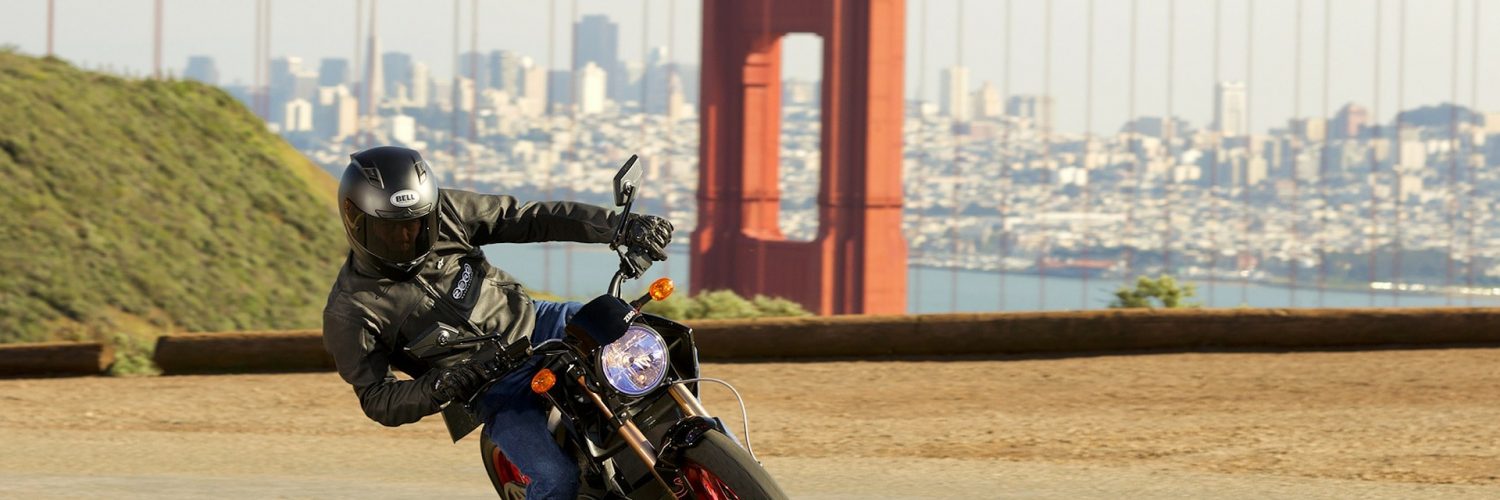
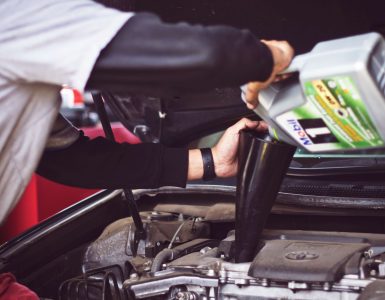
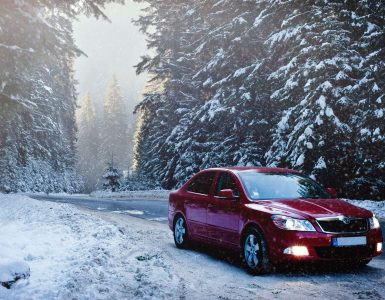
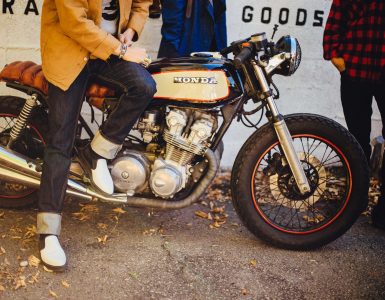
















Add comment